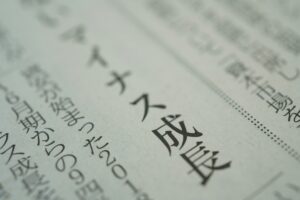In the heart of Japan’s bustling cities and serene countryside, amidst the ancient temples and cutting-edge technology, lies a linguistic phenomenon as intriguing as it is omnipresent: Katakana English. This unique blend of Japanese phonetics and English vocabulary creates a phonetic maze that bewilders and fascinates in equal measure. From the neon-lit streets of Tokyo to the pages of popular manga, Katakana English serves as a bridge and a barrier, a symbol of globalization and a testament to the resilience of cultural identity. This article delves into the origins, usage, and future of Katakana English, offering a guide through its phonetic labyrinth and exploring its role in Japan’s linguistic landscape.
Unveiling Katakana English: Japan’s Phonetic Labyrinth
Katakana English, or "Katakana Eigo," refers to the use of the Katakana script to phonetically transcribe English words and phrases into a form that can be more easily pronounced by Japanese speakers. This script, one of three writing systems in Japan, traditionally marks foreign words, technical terms, and onomatopoeia. The resultant Katakana English is a fascinating mosaic of phonetics, where words undergo a transformation, often emerging with new shapes and sounds. This linguistic adaptation reveals the intricate dance between language preservation and adaptation, showcasing Japan’s unique approach to assimilating foreign elements.
The Origins of Katakana English: A Historical Overview
The roots of Katakana English stretch back to the Meiji Era (1868-1912), a period of rapid modernization and Westernization in Japan. As the country opened its doors to foreign influence, a surge of English terms entered the Japanese lexicon, necessitating a system for their assimilation. Katakana, with its syllabic simplicity, became the tool for this task, encoding English into a form digestible for the Japanese palate. This practice has evolved over the decades, mirroring changes in society, technology, and international relations, and cementing its place in the fabric of Japanese language and culture.
Navigating the Maze: Understanding Katakana English
To navigate the maze of Katakana English, one must first understand the Katakana script—a syllabary of 46 basic characters that represent specific syllables in Japanese. Each English word transcribed into Katakana is reshaped to fit this syllabic structure, which can result in significant alterations from the original pronunciation. For instance, "coffee" becomes "コーヒー" (kōhī), and "internet" transforms into "インターネット" (intānetto). This phonetic conversion process, while straightforward, often produces results that are unintelligible to the untrained ear, making mastery of Katakana a crucial step in deciphering Katakana English.
The Role of Katakana in Modern Japanese Society
In contemporary Japan, Katakana serves as a linguistic gateway, opening up the Japanese language to the world beyond its shores. It is the script of globalism, marking everything from brand names and technology to food and fashion. Beyond its practical function, Katakana also carries aesthetic and cultural connotations, often used to convey a sense of the modern, the foreign, or the futuristic. This dual role of Katakana reflects the complex relationship Japan has with globalization—embracing foreign concepts while maintaining a distinct cultural identity.
From Menu to Manga: Katakana English Everywhere
Katakana English is a pervasive presence in Japan, visible on every menu, billboard, and product label. In the culinary world, it introduces diners to dishes like "ハンバーガー" (hanbāgā, hamburger) and "エスプレッソ" (esupuresso, espresso). In pop culture, it peppers the dialogue of manga and anime, bringing characters to life with exclamations like "ナイス!" (naisu!, nice!) and "オーケー!" (ōkē!, okay!). This widespread use demonstrates the flexibility of Katakana English, as it seamlessly integrates into various aspects of daily life, enriching the Japanese language with a tapestry of global influences.
Deciphering Katakana: Tips for the Uninitiated
For those new to Katakana English, the challenge lies in recognizing and adapting to its phonetic shifts. Key tips include learning the basic Katakana characters, practicing with common Katakana English words, and listening to native speakers. Online resources, language exchange, and immersion are invaluable tools in this journey. As learners become more familiar with the patterns of transformation, the maze of Katakana English begins to unravel, revealing a linguistic landscape rich with nuance and diversity.
The Challenges Foreigners Face with Katakana English
Foreigners often encounter a unique set of challenges when confronting Katakana English. The phonetic discrepancies between the original English words and their Katakana counterparts can lead to confusion and miscommunication. Furthermore, the abundance of loanwords, which have been fully assimilated and may carry different connotations or meanings in Japanese, adds another layer of complexity. For many, overcoming these hurdles requires not only language skills but also a deep understanding of cultural context and nuances.
Katakana English in the Digital Age: A New Frontier
The digital age has propelled Katakana English into new territories, amplifying its presence online and in technology. Social media, video games, and digital platforms have become fertile ground for the evolution and dispersion of Katakana English, facilitating cross-cultural exchange and innovation. The adoption of English technical terms into Japanese, often through Katakana, underscores the dynamic nature of this linguistic phenomenon, as it adapts to the rapid pace of technological advancement and digital communication.
Bridging Cultures: Katakana English as a Linguistic Blend
Katakana English stands as a testament to the fluidity and adaptability of language, embodying a blend of linguistic and cultural elements. It serves not only as a practical tool for communication but also as a symbol of Japan’s ongoing dialogue with the global community. This linguistic blend enriches the Japanese language, offering insights into the ways in which cultures intersect, adapt, and evolve. Through Katakana English, speakers navigate the complexities of identity, belonging, and global interconnectedness, crafting a multicultural narrative that is uniquely Japanese.
Learning Katakana English: A Guide for Beginners
For beginners eager to master Katakana English, the journey starts with the basics of the Katakana script. Engaging with a wide range of materials, from textbooks to manga, helps reinforce learning, while practical application through conversation and media consumption accelerates comprehension. Patience and persistence are key, as is a curiosity about the cultural contexts that give rise to Katakana English expressions. Over time, learners will find themselves unlocking the secrets of this phonetic maze, gaining not only language skills but also cultural insights.
The Future of Katakana English in Global Communication
As global communication continues to evolve, so too will the role of Katakana English. It remains a vibrant area of linguistic study, reflecting broader trends in globalization, technology, and cultural exchange. The future of Katakana English may see it becoming even more integrated into the fabric of Japanese language and society, potentially influencing other languages and scripts in the process. Its adaptability and resilience suggest a bright future, one in which Katakana English continues to bridge cultures and connect worlds.
Beyond the Maze: The Evolving Landscape of Katakana English
The landscape of Katakana English is ever-changing, driven by forces of globalization, technology, and cultural exchange. As it evolves, it challenges and enriches our understanding of language and culture, offering a window into the dynamic interplay between the local and the global. Navigating this phonetic maze requires not just linguistic knowledge but an appreciation of its cultural depth and complexity. Beyond mere transcription, Katakana English embodies the ongoing dialogue between Japan and the wider world, a testament to the power of language to bridge differences and forge connections.
Katakana English, in its essence, is more than just a phonetic curiosity—it is a vibrant interface of culture, history, and identity. As we explore this fascinating linguistic phenomenon, we uncover the layers of interaction and adaptation that define Japan’s relationship with the global community. The journey through the phonetic maze of Katakana English offers not only a linguistic challenge but also a rich cultural experience, highlighting the beauty and complexity of cultural exchange. As we look to the future, Katakana English stands poised at the crossroads of tradition and innovation, embodying the ongoing dialogue between the familiar and the foreign, the past and the future.



